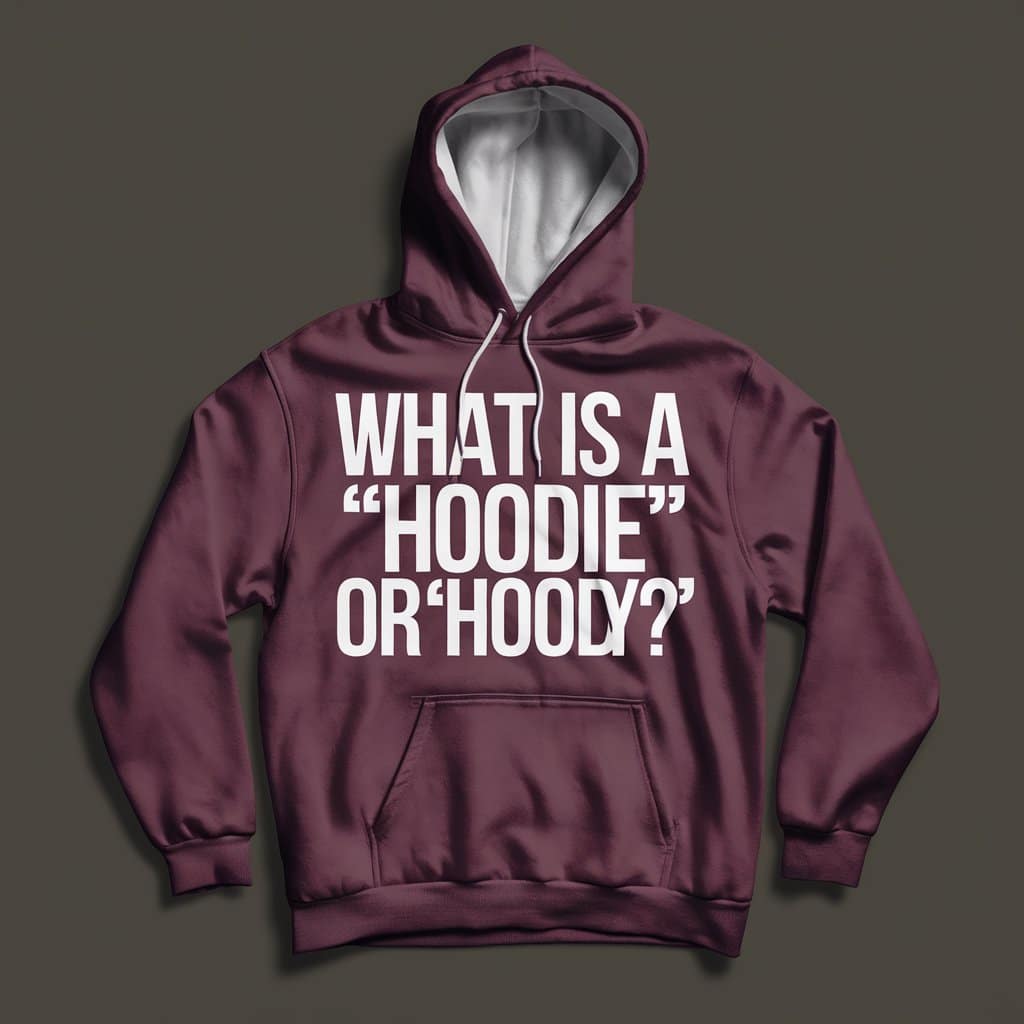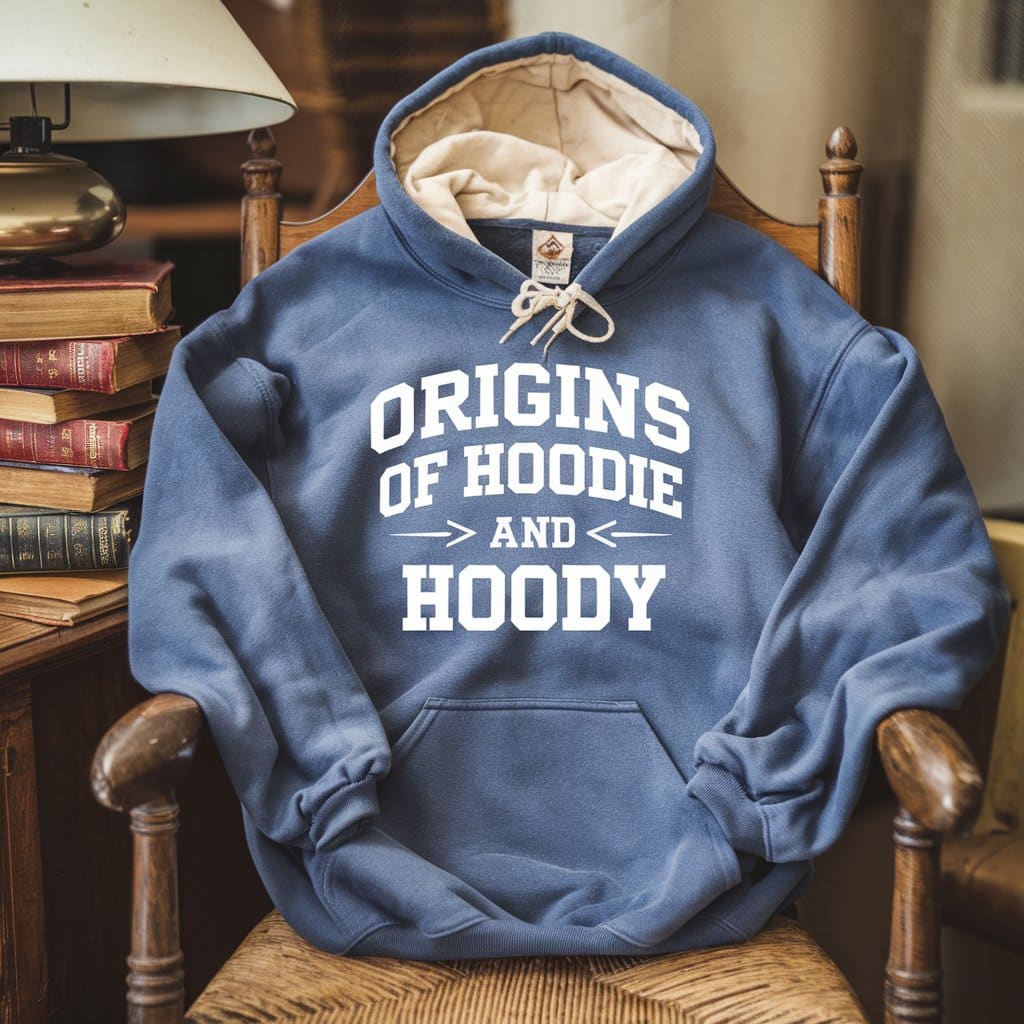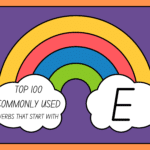When it comes to casual, comfortable wear, the hoodie has become an iconic piece of clothing. From college campuses to street fashion and gym lockers, hoodies are everywhere. But have you ever stopped to wonder: Is it “hoody” or “hoodie”?
This debate over the correct spelling of the word might seem minor, but it’s sparked a surprising amount of confusion. Some prefer “hoody,” while others insist on “hoodie.”
In this blog post, we’ll settle the matter, diving into the origins, regional preferences, and how to choose the right spelling.
What is a “Hoodie” or “Hoody”?

At its core, a hoodie (or hoody) is a sweatshirt with a hood. These garments often include a drawstring to adjust the hood’s fit and may also feature front pockets for storage or warmth. The term has evolved to represent a comfortable, stylish, and functional piece of clothing that crosses cultural and social boundaries.
But how do you define it? The hoodie definition hoodie lovers agree upon is that it’s a garment worn casually, often during colder months or while engaging in light physical activity. The answer to “Is a hoodie a sweatshirt?” is technically yes, but with one major distinction: a hood. We’ll get into the details of sweatshirts vs hoodies later in this article.
Whether you’re wearing a hoodie with different colored hood or a simple blue hoodie with white strings, it remains a versatile staple in both streetwear and athleisure. The key here is understanding both the definition and cultural significance of the hoodie.
Must Read : The Past Tense of Meet: Picking the Right Verb
Hoodie or Hoody: Which Spelling is Right?
When it comes to the spelling of this popular garment, both “hoodie” and “hoody” are used, but the “hoodie” variant is more commonly accepted in mainstream usage. In fact, “hoodie” is the most widely recognized spelling in fashion, pop culture, and the media. However, “hoody” has also gained traction, especially in certain regional contexts or informal settings.
So, which spelling is correct? The answer largely depends on context and personal preference, though “hoodie” tends to be the more prevalent form. Dictionaries typically recognize both versions, but it’s worth noting that “hoodie” is the go-to choice for most English speakers worldwide. Regardless of the spelling, they refer to the same item—a sweatshirt with a hood.
Origins of “Hoodie” and “Hoody”

The word “hoodie” first appeared in the United States in the 1990s, becoming a widely recognized term to describe a casual sweatshirt with a hood. It was a practical piece of clothing, primarily associated with youth culture and urban streetwear. As the style grew in popularity, particularly among teenagers and skaters, the term “hoodie” emerged to describe this now-iconic item of clothing.
The alternative spelling, “hoody,” likely came about due to phonetic variation, with people spelling the word the way it sounds. Some regions and individuals prefer this variation, although it has not become as dominant as the “hoodie” version.
Both spellings share a common origin in the word “hood,” referring to the garment’s defining feature: a head-covering attached to the sweatshirt. The evolution of these spellings is a testament to the adaptability of language, influenced by cultural shifts and individual interpretation.
You may also like : What Are the Plurals of ‘Ox’ and ‘Fox’? Why ‘Oxen’ and ‘Foxes’?
The Birth of the Hoodie
The hoodie, as we know it today, traces its origins back to the 1930s. Early versions of hooded sweatshirts were designed as functional workwear, providing warmth and protection for laborers in cold environments. In fact, the brand Champion is often credited with creating the first mass-produced hoodie in the 1930s, originally designed for athletes and workers who needed warmth during physical activity.
By the 1970s, the hoodie began to gain popularity within urban culture, particularly among athletes, skaters, and hip-hop artists. The garment’s association with youth subcultures, rebellion, and individuality led to its mainstream adoption in the 1990s. Over the decades, the hoodie transitioned from a practical item to a fashion statement, influencing streetwear and even becoming a symbol of political protest or personal expression.
The hoodie’s history highlights its adaptability, evolving from a utilitarian garment to a beloved style staple that transcends both generations and fashion trends.
Hoodie vs Hoody: A Regional and Stylistic Debate
The debate over whether to use “hoodie” or “hoody” is largely a matter of regional preference and stylistic choice. In the United States, “hoodie” is the dominant spelling, appearing in most fashion-related publications, retail advertisements, and mainstream media. However, in parts of the UK and Australia, “hoody” is sometimes used interchangeably with “hoodie,” though “hoodie” is still the more common form globally.
The difference in spelling often comes down to the phonetic preferences of speakers in different regions. While “hoodie” tends to be favored in the United States, the variant “hoody” reflects the natural inclination of some English speakers to spell the word as it sounds, with a more relaxed approach to spelling conventions.
In terms of style, both spellings carry the same meaning, referring to the same article of clothing. The choice between them often depends on personal preference, cultural influences, or the desired tone of the writing.
Digital Influence and SEO
Another factor influencing the hoodie or hoody spelling question is digital culture. With search engines like Google, the more common spelling “hoodie” tends to dominate. This is also evident on social media platforms where hashtags like #hoodieweather or #hoodie are more frequently used than #hoody. For businesses trying to capture online traffic, it makes sense to use “hoodie” for better visibility.
Style and Niche Communities
While the broader world may favor “hoodie,” niche fashion brands or communities might prefer “hoody” to set themselves apart. Using a less common spelling can create a sense of exclusivity or uniqueness. For instance, if you’re a small clothing brand trying to stand out, using “hoody” instead of “hoodie” could give your products a distinct edge, even if the spelling isn’t mainstream.
What’s the Plural of “Hoodie” and “Hoody”?
Here’s where things get simple: whether you prefer hoody or hoodie, the plural form is the same — hoodies.
Pluralization Rules:
| Singular | Plural |
| Hoodie | Hoodies |
| Hoody | Hoodies |
The plural form hoodies follows the standard English rule for pluralizing words ending in “y.” Simply replace the “y” with “ies.” It doesn’t matter which singular form you start with (hoody or hoodie), the plural ends up being hoodies in either case.
Common Mistakes
One of the most common mistakes when it comes to spelling “hoodie” or “hoody” is using them interchangeably without understanding the slight regional differences. Some people may mistakenly think that “hoody” is the “correct” spelling because it phonetically matches the way they pronounce the word, while others may be unfamiliar with the alternative spelling “hoody” and only recognize “hoodie.”
Additionally, the confusion might arise in the context of other clothing-related terms. For instance, some may mistakenly use “hoody” when referring to the hoodie as an adjective, such as in “hoody sweatshirt.” However, in this case, “hoodie” remains the preferred spelling.
When in doubt, check the context and audience: “hoodie” is the safe choice for formal writing, while “hoody” may be more acceptable in casual or regional contexts.
Usage Examples of “Hoodie,” “Hoody,” and “Hoodies”
When it comes to real-world usage, it helps to see these terms in context. Below are sentences demonstrating the use of “hoodie”, “hoody”, and “hoodies”:
Sentences with “Hoodie”
- “I wore my favorite hoodie to the game last night.”
- “This blue hoodie with white strings is perfect for casual Fridays.”
- “It’s starting to feel like hoodie weather, isn’t it?”
Sentences with “Hoody”
- “He grabbed his hoody before heading out into the chilly morning.”
- “Is it hoody or hoodie? Either way, I need one for the gym.”
- “The store had a sale on hoody styles this weekend.”
Sentences with “Hoodies”
- “They’re selling limited edition hoodies with custom prints.”
- “I have too many hoodies, but I can never resist buying another.”
- “Which of these hoodies would you recommend for hiking?”
Practical Advice: Which Spelling Should You Use?
When deciding whether to use “hoodie” or “hoody,” consider the following tips:
- Go with “Hoodie” for Consistency: Unless you have a particular reason to use “hoody,” such as regional preferences or personal style, it’s best to stick with the more common spelling, “hoodie.” It is widely recognized and accepted across global English-speaking communities.
- Consider Your Audience: If you are writing for an international audience or in a professional context, “hoodie” is the safe and widely understood option. On the other hand, if you’re targeting a specific regional demographic (such as British or Australian readers), “hoody” might be a more familiar variant.
- Follow Brand Guidelines: If you are writing for a clothing brand, magazine, or retailer, check their specific guidelines or style guide for spelling consistency. Some brands may prefer one spelling over the other for branding consistency.
- Be Consistent: If you decide to use “hoody,” ensure you remain consistent throughout your writing. Avoid switching back and forth between the two spellings in the same article or piece of content.
Here’s a quick guide to help you choose:
| Scenario | Recommended Spelling |
| American audience or global reach | Hoodie |
| British audience or regional context | Hoody |
| SEO optimization for search engines | Hoodie |
| Niche fashion or streetwear brand | Hoody (for uniqueness) |
Hoodie vs Sweatshirt: What’s the Difference?
You might also wonder about the difference between a hoodie and a sweatshirt. Here’s a basic rundown:
| Hoodie | Sweatshirt |
| Always includes a hood | No hood |
| Typically has a front pocket | May or may not have pockets |
| Used in athletic wear, casual fashion | More basic, often associated with gym wear |
| Frequently worn in streetwear and trendy outfits | More utilitarian, seen as a layering piece |
The major distinguishing feature is the hood. Hoodies tend to be more versatile and are often seen in both casual and semi-formal settings, like casual Fridays at work. Sweatshirts, on the other hand, lack a hood and are often more utilitarian in nature, making them more suitable for layering during workouts or cold-weather activities. If you’re asking “is a hoodie a sweatshirt?” technically it is, but with a hood. You can explore more about sweatshirt vs hoodie to see which fits your style and needs.
Learn more about : Pre vs Post: Which Prefix to Use?
Conclusion
Whether you spell it “hoodie” or “hoody,” both versions are understood to refer to the same iconic garment. While “hoodie” is more universally recognized and used in professional writing, “hoody” can be seen in certain regional contexts and informal settings.
Understanding the history and evolution of the hoodie helps illuminate why both spellings exist, and knowing when and where to use each can help you write more effectively. Ultimately, the key is to prioritize consistency, clarity, and the preferences of your target audience.
Embrace the hoodie—whatever you choose to call it—as a versatile and timeless piece of clothing that has a fascinating history of its own.

John David is an experienced blogger at Grammar Blend, passionate about language and communication. With a keen eye for grammar and clarity, he shares practical tips and tools to help readers improve their writing skills. His insightful articles make grammar accessible and engaging for learners of all levels.







